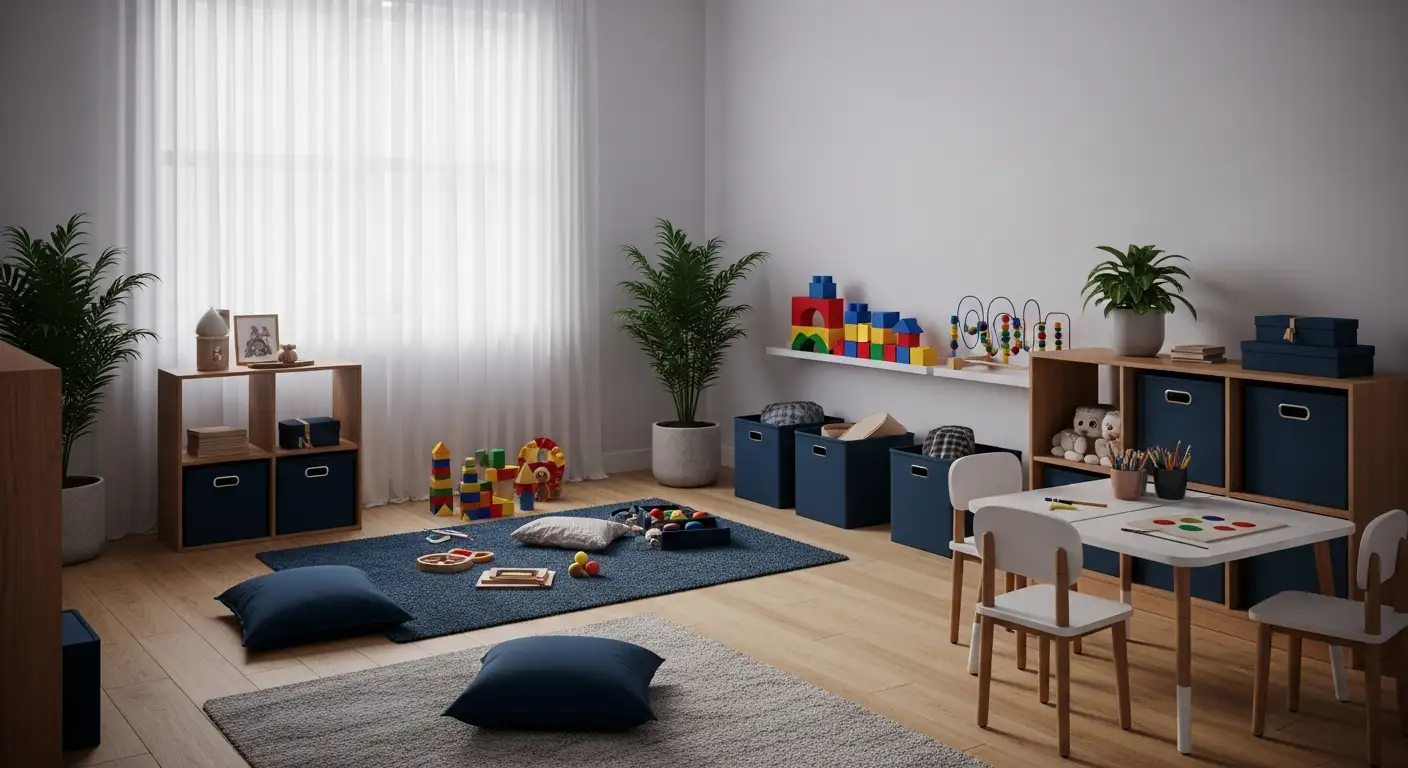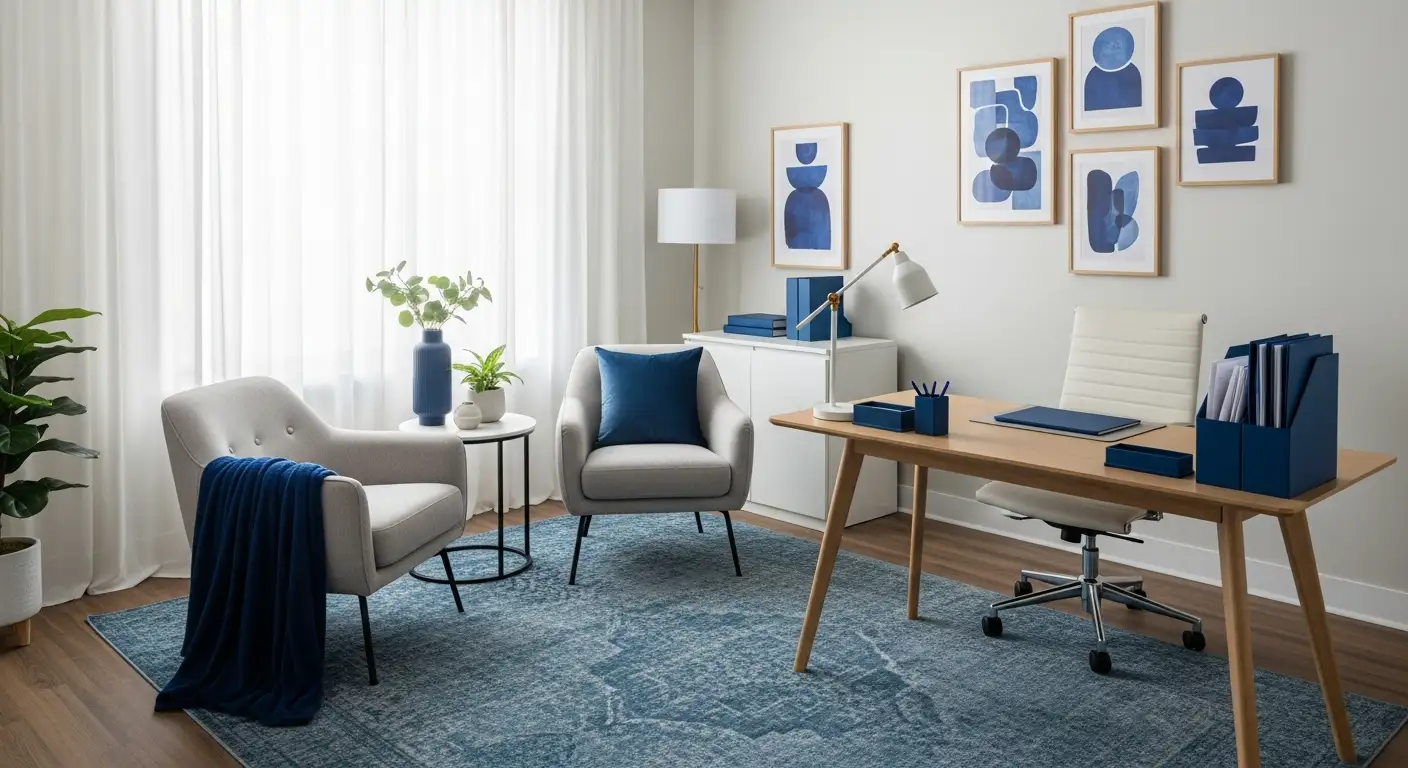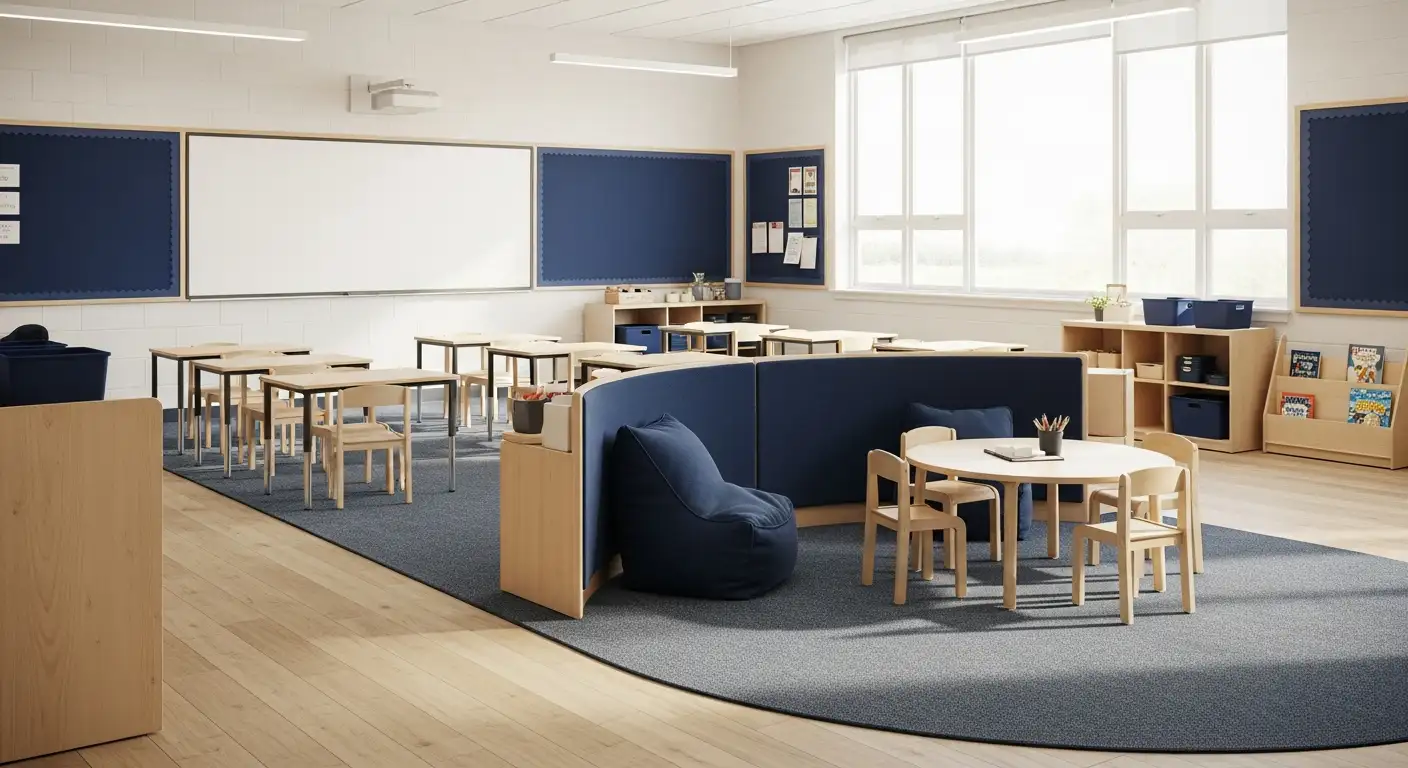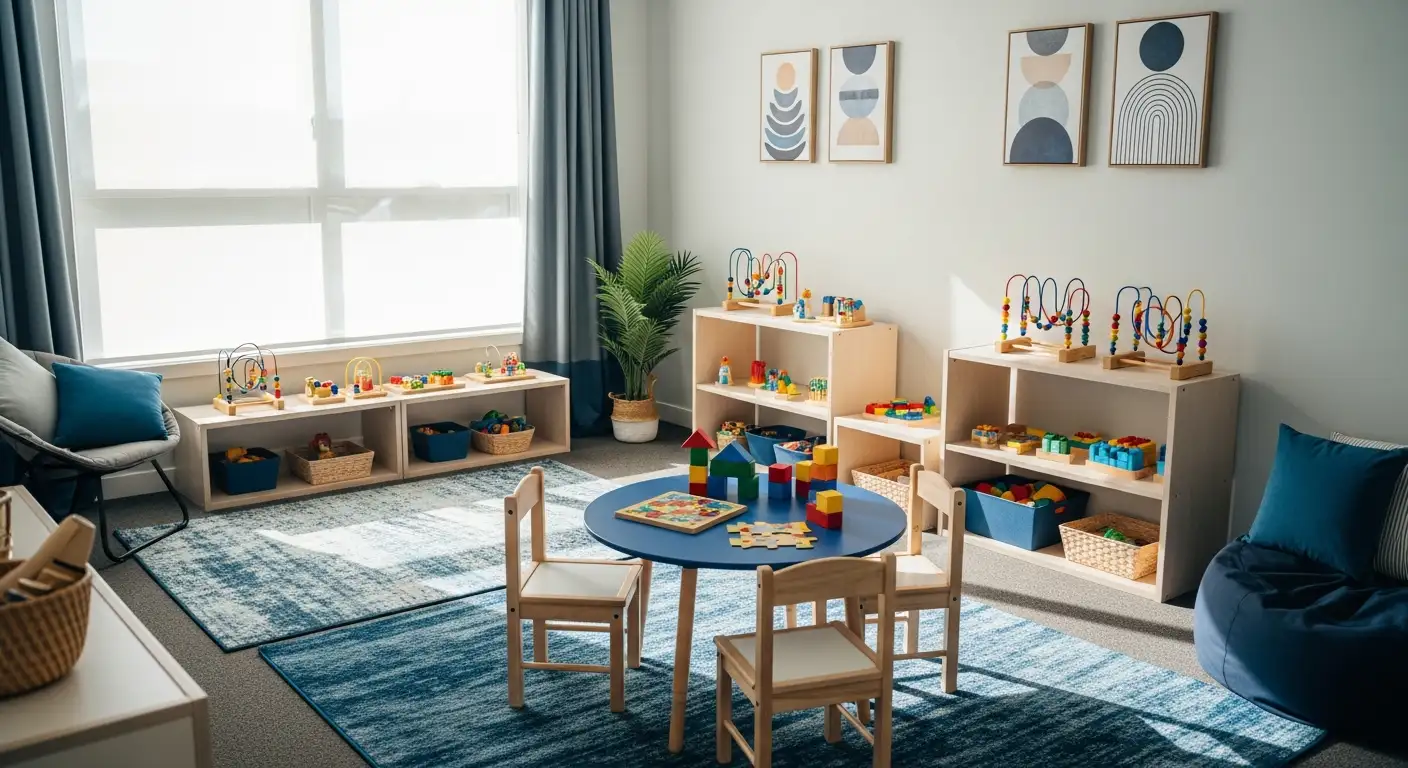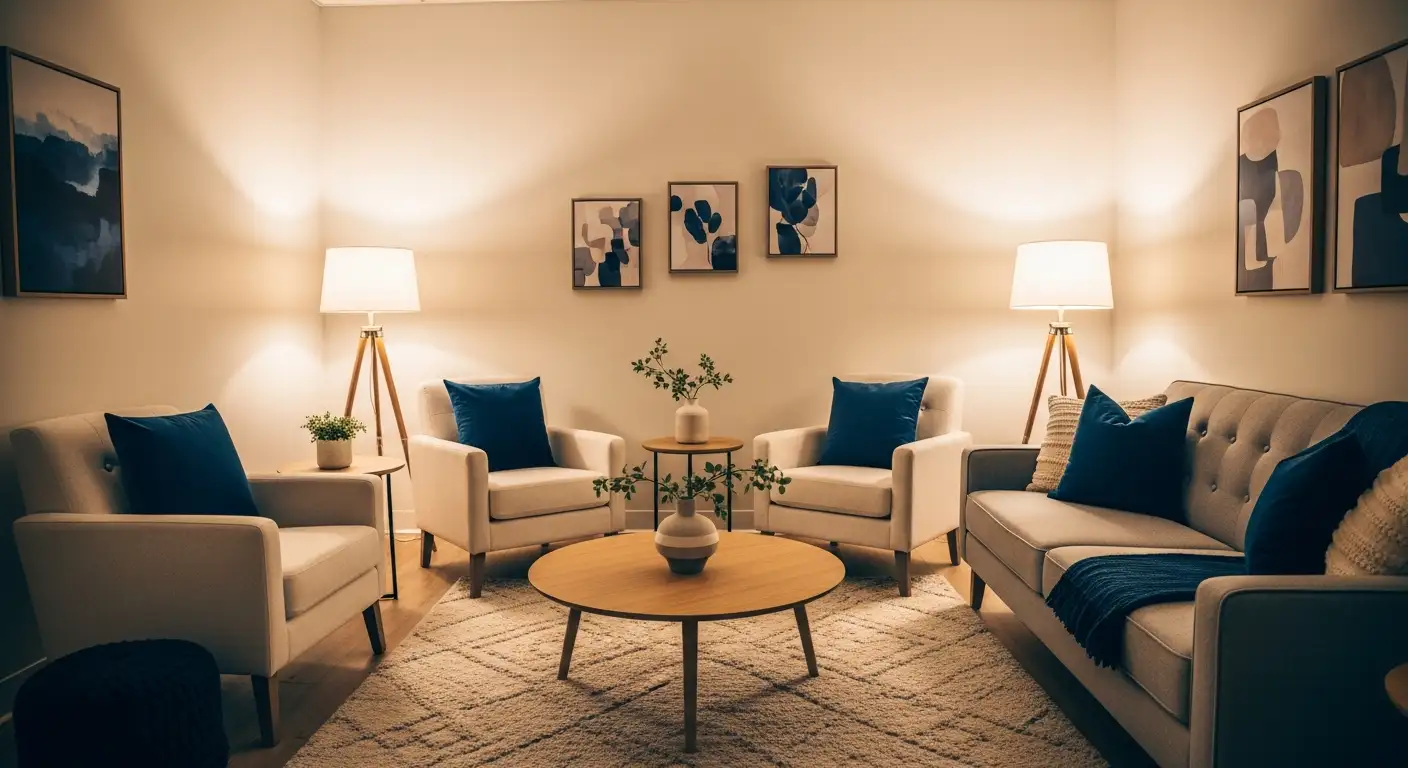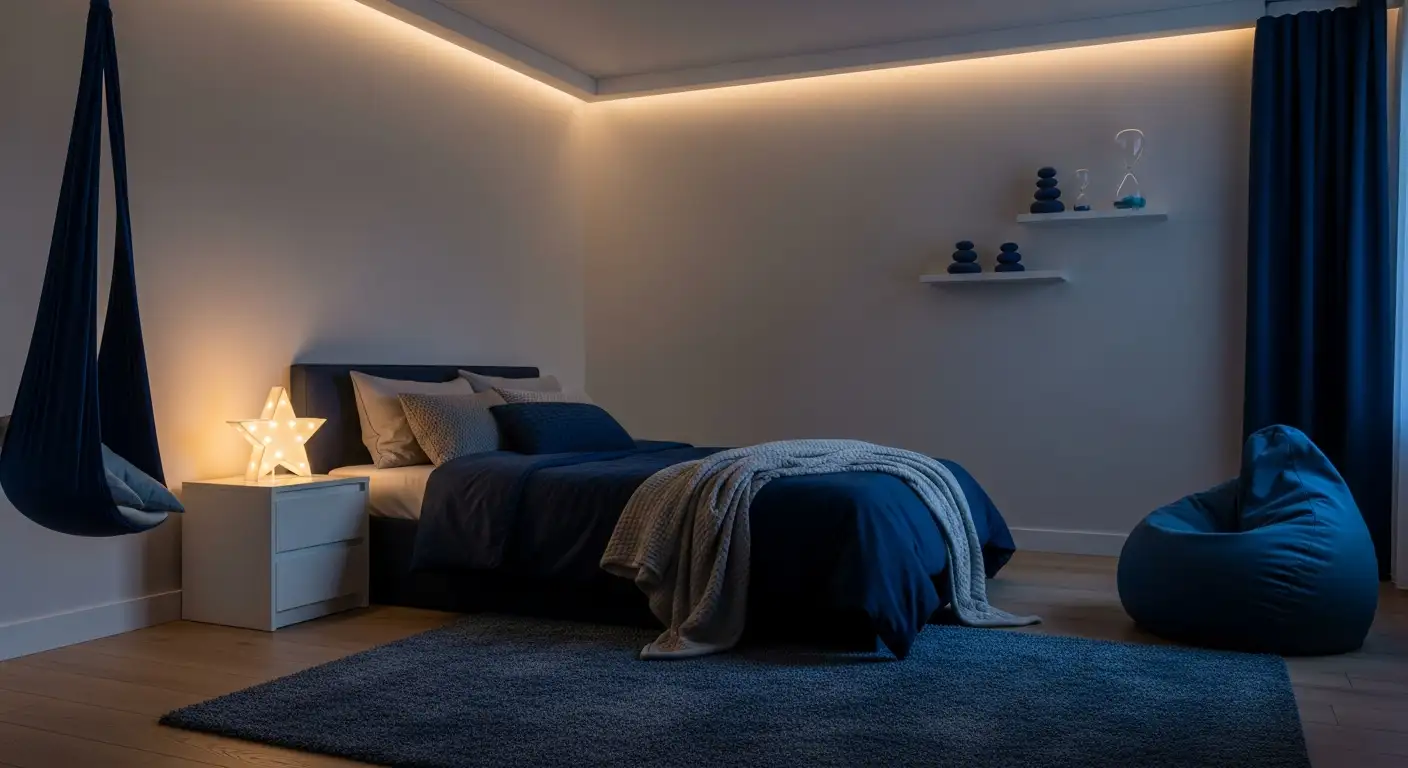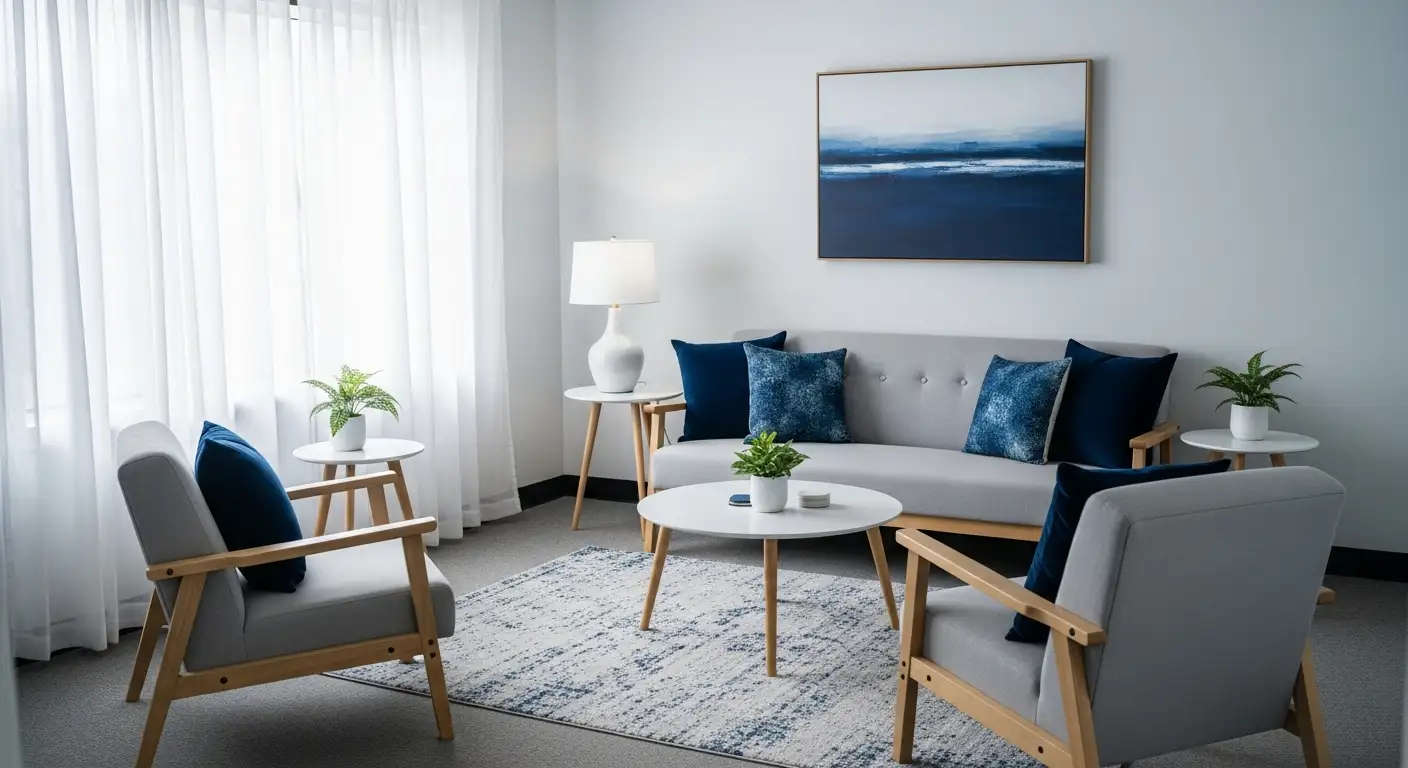Autism Sleep Problems: ABA Bedtime Plan That Works
Autism sleep problems improve with a structured ABA bedtime plan. Use visuals, rewards, and steady wake times to reduce night wakings and late-night bedtimes.

Key Points:
- Create an ABA bedtime plan to reduce autism sleep problems like late bedtimes and frequent night wakings.
- Use a short, visual routine, bedtime fading, and clear rewards.
- Track progress with a sleep diary, anchor wake time with morning light, and keep bedtime consistent to support lasting sleep improvements.
Families face late bedtimes, early wakeups, and school days after short nights. Autism sleep problems show up as trouble falling asleep, frequent night wakings, or waking at 4 a.m. An ABA bedtime plan turns the evening into a predictable, teachable routine.
This guide aims to give you concrete steps, data you can track, and tools to adjust when life gets messy. Think “repeatable bedtime” and not a new gadget.

Autism Sleep Problems: Why Do They Happen?
Autism and insomnia often go together because sleep is sensitive to routines, sensory input, and anxiety. Changes in schedule, loud sounds, or scratchy pajamas can keep a child alert. Irregular naps and late-day screen time make sleep pressure too weak at night. Some children also show differences in melatonin timing, which affects the body clock.
Research shows how common the autism sleep problems are. Clinically significant sleep problems affect over 80% of children on the spectrum, two to three times more than their peers. A clinic-based 2024 study even reported sleep disorders in 95.7% of autistic children evaluated, with sleep-onset problems as the top concern.
Medical factors can add layers. Allergies, reflux, asthma, constipation, enlarged tonsils, and seizures can interrupt sleep. Some medications increase alertness. Rule these out with your pediatrician. A brief screening for sleep apnea and iron deficiency (for restless legs) is also worth asking about.
Common patterns in autistic sleep problems
- Long time to fall asleep. Child is still active at lights-out; bedtime gets pushed later.
- Frequent night wakings. Child needs a parent to fall back asleep; learned cues like rocking or screens maintain the cycle.
- Early rising. Child wakes before 5 a.m.; morning light and inconsistent nap timing keep it going.
- Irregular schedule. Weekday and weekend bedtimes differ; body clock never settles.
What Is an ABA Bedtime Plan?
An ABA bedtime plan applies behavior principles to sleep in clear, family-friendly steps, often delivered through in-home ABA therapy. The plan defines the goal, teaches a simple routine, shapes behavior in small moves, and rewards progress. It also builds parent consistency, which is the engine behind sleep change.
Core parts of an ABA sleep plan
- Goal setting. Pick one target first, like “asleep by 9:00 p.m.” or “self-soothe after waking.”
- Baseline tracking. Keep a 7-day sleep diary and align notes with assessments in ABA therapy.
- Routine teaching. Use the same 3–5 steps nightly with a visual schedule and, when helpful, visual timers.
- Prompting and fading. Give just enough help to complete each step, then fade your help.
- Reinforcement. Praise, small rewards, or tokens for meeting clear sleep goals.
- Consistent responses. Agree on what you will and will not do during wakings.
A brief, structured behavioral program can lower autistic sleep problems for months after treatment. Trials of the “Sleeping Sound” model show sustained improvements in child sleep with a short parent-coaching format.
How to Build Your ABA Bedtime Plan
Start simple. Keep each change small and repeatable for at least a week before moving to the next step.
- Define the sleep target and learn your baseline. Write the current sleep window on paper. Note time in bed, estimated sleep onset, number of wakings, and final wake time.
- Design a short, visual bedtime routine Pick 3–5 steps your child can follow the same way every night.
- Bath or wipe-down. Light wash or warm cloth.
- Brush teeth. Short, timed step.
- Bathroom. Quick trip to avoid get-ups.
- Book. Same seat, same length.
- Lights out. Same phrase and location.
- Use “First–Then” and limited choices. “First pajamas, then book.” Choices reduce battles: “Blue PJs or green PJs?” Keep choices small and consistent.
- Match bedtime to real sleepiness (bedtime fading). If the child falls asleep around 10:15 p.m., set lights-out at 10:10 p.m. for three nights. When sleep onset drops under ~15–20 minutes, move bedtime earlier by 10–15 minutes. Repeat until you reach the desired schedule. Small shifts protect success.
- Create a calm sleep space.
- Dark and cool. Dim lights one hour before bed; keep the room cool and quiet.
- Sensory supports. Soft fabrics, steady fan sound, minimal clutter. Consider weighted blankets for deep pressure.
- Bed = sleep. Use the bed for sleep and illness care only; move play to another space.
- Reward progress, not perfection
- Bedtime tokens. Level 1: Earn a sticker for starting the routine on time.
- Sleep-onset goal. Level 2: Earn a small reward for falling asleep within 20 minutes.
- Night-waking plan. Level 3: Earn a bonus for sleeping through or using a calm strategy after a brief wake.
- Plan your response to night wakings. Decide on one response and write it down. Use brief, low-stim replies like “It is sleep time.” Keep check-ins short and spaced out. Avoid new sleep crutches like snacks or shows during the night.
- Lock in daytime anchors
- Morning light within 30 minutes of wake. Open curtains or step outside.
- Active play. Aim for daily movement.
- Screen curfew. Turn off bright screens at least one hour before bed; move devices out of the bedroom.
- Tackle early rising. Treat wakes before a set time as “night.” Keep lights low, voices quiet, and responses brief. Set an “OK-to-wake” clock to a realistic time and move it later by 10 minutes every few days.
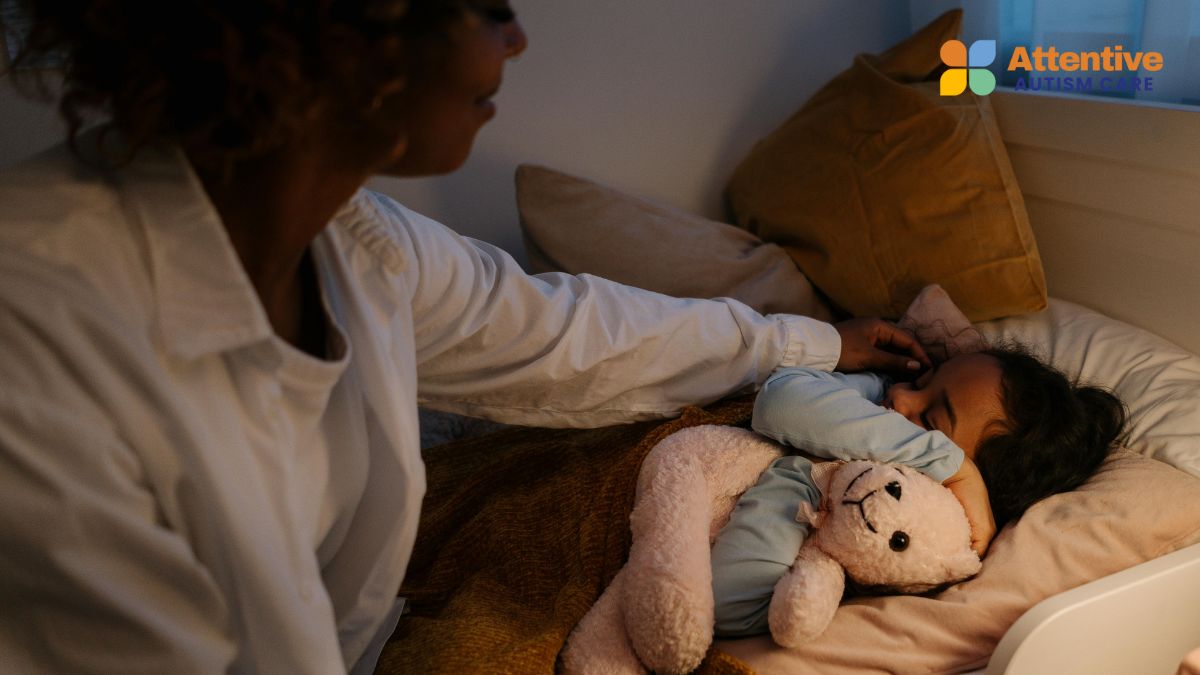
What Does “Parent-Led” Look Like Over Two Weeks?
A parent-led schedule makes the plan doable on a busy week.
Week 1: Stabilize and measure
- Routine and diary. Run the same 3–5 step routine nightly; complete the sleep diary.
- Bedtime fading. Set lights-out to match true sleepiness.
- Rewards. Start Level 1 rewards for on-time routine starts.
Week 2: Shape faster sleep onset
- Move bedtime earlier. Shift by 10–15 minutes when sleep onset is under 20 minutes.
- Add Level 2 reward. Celebrate nights with faster sleep onset.
- Night-waking response. Use brief check-ins, spaced out, and keep stimulation low.
Families who want telehealth coaching can apply the same steps with guided troubleshooting. Early wins keep motivation high.
How Do We Handle Night Wakings and Early Rising?
Night wakings often follow learned patterns. If falling asleep requires lying on a parent’s arm, the child expects that cue after each cycle. The ABA bedtime plan teaches new cues.
For night wakings
- Predictable script. One phrase, same tone, same action.
- Brief checks. Level 1: Check every 5 minutes briefly. Level 2: Extend to 7–10 minutes as skills grow.
- Independent tools. Picture card that says “quiet body,” soft fidget, or a calm breathing prompt.
For early rising
- Clock training. Level 1: Set “OK-to-wake” at the current average rise time. Level 2: Move 10 minutes later every few days.
- Morning light. Open shades at the target wake time to anchor the body clock.
- No big rewards at 4 a.m. Keep early wakes boring. Save preferred activities for the target wake time.
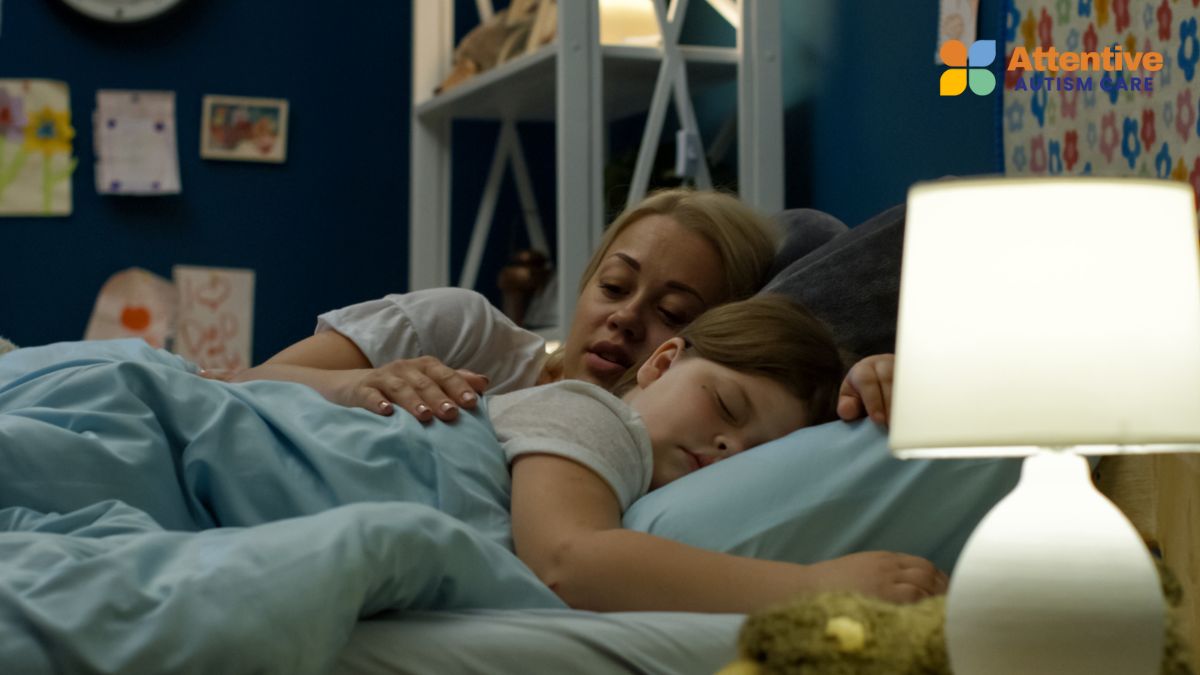
When Is Melatonin Helpful?
Melatonin can support sleep onset while you build habits. A 2023 meta-analysis reported about 15 minutes faster sleep onset and about 19 minutes more total sleep time with melatonin across pediatric trials. Melatonin works best when paired with the bedtime routine and screen curfew. Ask your pediatrician about timing and dose, especially if your child takes other medications.
Some children with autism show differences in melatonin production and timing, which may explain why timed supplementation helps with sleep onset. Use melatonin as a bridge while the behavior plan resets the schedule.
How Much Structure Is Enough?
Structure supports autistic sleep problems without making evenings rigid. Aim for repeatable, not perfect.
Keep these non-negotiables most nights
- Regular schedule. Bedtime and wake time within a 30-minute window grounded in consistent routines in autism care.
- Routine steps. Same order and length.
- Screen curfew. Devices out of the bedroom.
- Morning light and movement. Start the day with light and activity.
Adjust when life happens
- Travel or holidays. Keep the routine steps and the “OK-to-wake” clock, even if times shift.
- Growth spurts or illness. Protect rest; restart bedtime fading once health is back on track.
- School demands. If homework runs late, shorten the routine but keep its order.
How Much Sleep Is Healthy by Age?
Sleep needs vary, but general targets help set expectations:
- Preschool (3–5 years). About 10–13 hours in 24 hours, including naps.
- School-age (6–12 years). About 9–12 hours.
- Teens. About 8–10 hours.
Use these ranges to choose target bedtimes and wake times that fit school schedules. If a 4-year-old needs 11 hours and must wake at 7:00 a.m., lights-out around 8:00 p.m. is reasonable once bedtime fading reaches the goal.

Frequently Asked Questions
How can I help my autistic child sleep?
Help your autistic child sleep by aligning bedtime with true sleepiness using bedtime fading. Create a short, visual routine, remove screens, and dim lights an hour before bed. Use small rewards for staying on track. Anchor sleep with morning light and check medical issues if sleep remains difficult.
How much sleep does an autistic 4-year-old need?
An autistic 4-year-old needs 10–13 hours of total sleep in 24 hours, including naps. For a 7:00 a.m. wake time, aim for an 8:00 p.m. bedtime if sleep starts within 20 minutes. Keep wake, nap, and bedtime routines consistent daily to protect night sleep quality.
Do autistic people have less melatonin?
Autistic people may have lower or shifted nighttime melatonin levels, making it harder to fall asleep. Melatonin supplements can help when paired with a strong routine, improving sleep onset by around 15 minutes and total sleep by around 19 minutes. Consult your pediatrician for proper timing and dosage.
Start a Bedtime Plan That Finally Works
Families can build better nights with a simple, steady routine and small weekly changes. By engaging in ABA therapy services in Colorado, Utah, North Carolina, Maryland, New Mexico, and Nebraska, you can get coaching that translates these steps to your home and your child’s sensory needs.
At Attentive Autism Care, we coach parents through bedtime fading, routine teaching, and consistent night responses so gains hold during growth spurts, travel, and school changes. Reach out to book a time that fits your week and get support that turns evenings into calm, repeatable nights.





